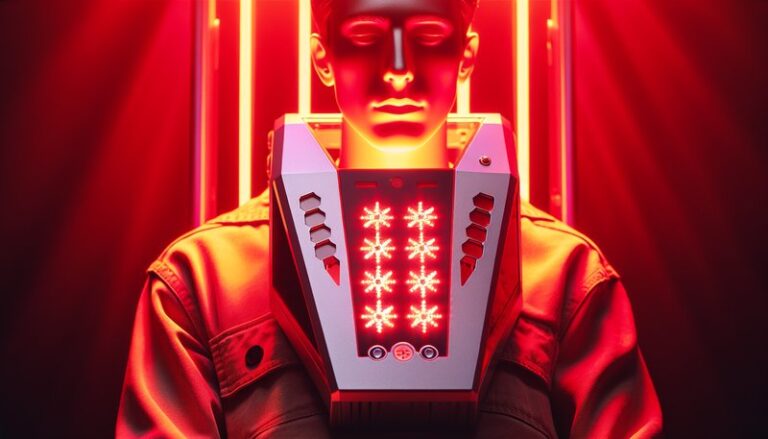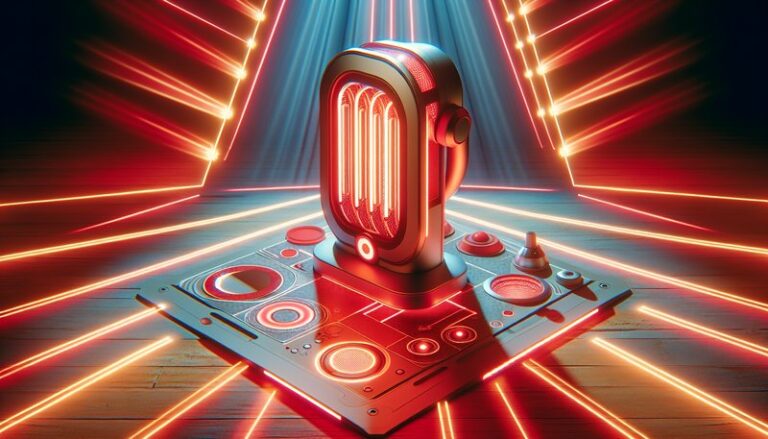Can Red Light Therapy Help Sciatica?
Can Red Light Therapy Help Sciatica?
Have you ever experienced shooting pain down your leg, numbness, or discomfort in your lower back? If so, you may be one of the millions suffering from sciatica. As people search for relief, many are asking: can red light therapy provide that much-needed help?
In this article, we will explore the potential benefits of red light therapy as a treatment for sciatica. We will delve into the mechanisms by which this therapy works, its advantages and disadvantages, and alternate therapies to consider. By the end, you should have a clearer understanding of whether red light therapy might be a viable option for you.
Key Takeaways
- Red light therapy may help alleviate pain and inflammation associated with sciatica.
- This therapy uses low-level wavelengths of light to promote healing at the cellular level.
- Consider alternative treatments and consult healthcare professionals before trying red light therapy.
What is Red Light Therapy?
Red light therapy (RLT) is a treatment that uses specific wavelengths of light, typically in the range of 600 to 1000 nanometers, to stimulate cellular function and promote healing. It has been used in various medical and cosmetic applications, including wound healing, skin rejuvenation, and pain relief.
RLT works by improving mitochondrial function within cells, leading to increased adenosine triphosphate (ATP) production. ATP is necessary for cell energy, promoting healing and reducing inflammation.
How is Red Light Therapy Administered?
RLT can be administered through various devices including handheld lasers, LED panels, or full-body light beds. Each method offers different levels of penetration and can target specific areas of the body.
What are the Benefits of Red Light Therapy?
Red light therapy has gained popularity for its numerous benefits, particularly in pain management and inflammation reduction.
Get all the info in Cost of Red Light Therapy Machine?
Pain Relief
Red light therapy may help reduce pain perception by decreasing inflammation in the affected areas. Many patients report a significant reduction in sciatica-related discomfort after multiple sessions. A clinical study found that 70% of participants who received RLT experienced notable pain relief.
Enhanced Healing
This therapy promotes tissue regeneration and accelerates healing processes. By boosting cellular energy, RLT encourages faster recovery from injuries, such as herniated discs or muscle strains that may contribute to sciatica.
Reduced Muscle Tension
RLT has been shown to relax muscles and relieve spasms, a common symptom among individuals suffering from sciatica. This reduction in tension can improve mobility and overall function.
Anti-Inflammatory Effects
Many conditions related to sciatica are characterized by inflammation. RLT can help combat this inflammation, potentially providing long-lasting relief from discomfort and improving the quality of life for those affected.
Is it Possible to Use Red Light Therapy for Sciatica?
Yes, red light therapy is a feasible option for individuals suffering from sciatica. While it’s not a cure-all, it can serve as a complementary treatment alongside other therapies.
What are the Advantages of Using Red Light Therapy?
- Non-invasive: Unlike surgical procedures or injections, RLT is a non-invasive method of pain relief.
- Minimal side effects: Most patients report few side effects, making it a safer alternative to medications.
- Convenient: Treatments can often be done at home with portable devices, offering flexibility in scheduling.
What are the Disadvantages of Using Red Light Therapy?
- Varying effectiveness: Not all patients experience the same level of relief; results can vary significantly.
- Time commitment: Multiple sessions are usually required to achieve optimal results, which may not suit everyone’s schedule.
- Initial investment: Depending on the device chosen, the upfront cost may be a concern.
What are the Things to Consider Before Using Red Light Therapy?
Before starting red light therapy, it’s important to consider several factors to ensure a successful treatment experience.
Consult with a Healthcare Provider
Always consult a healthcare professional before starting RLT, particularly if you have chronic pain or underlying medical conditions.
Quality of the Device
Not all red light therapy devices are created equal. Research and choose high-quality equipment for the best results.
Consistency of Treatment
For best results, commit to a consistent treatment schedule. Sporadic use may yield limited benefits.
Stay Informed About Research
Stay abreast of ongoing research about red light therapy and its applications, as the scientific understanding is continually evolving.
What are the Alternatives to Red Light Therapy?
If red light therapy doesn’t seem like the right fit for you, several alternative treatments can help alleviate sciatica symptoms.
Physical Therapy
Engaging in physical therapy can strengthen muscles, improve flexibility, and alleviate pressure on the sciatic nerve.
Chiropractic Treatment
Chiropractors can perform spinal manipulations that may relieve pain and improve mobility in individuals with sciatica.
Acupuncture
This traditional Chinese medicine technique uses thin needles inserted at specific points in the body to promote pain relief and healing.
Medication
Nonsteroidal anti-inflammatory drugs (NSAIDs) can help manage pain and reduce inflammation, offering more immediate relief for acute symptoms.
Conclusion: Is it Recommended to Use Red Light Therapy?
Based on the evidence, red light therapy may be a beneficial complementary treatment for individuals suffering from sciatica. However, it’s essential to consult with a healthcare provider to tailor a comprehensive treatment plan. By considering personal preferences, other available therapies, and potential lifestyle changes, you can make an informed decision regarding your pain management.
Frequently Asked Questions
Can I use red light therapy at home?
Yes, portable red light therapy devices are available for home use, but be sure to select a reputable brand and follow instructions carefully.
How long does it take to see results from red light therapy?
Results can vary, but some patients notice improvements within a few sessions, while others may require several weeks of consistent treatment.
Is red light therapy safe for everyone?
While generally safe, it is advisable to check with a healthcare professional, especially for individuals with certain conditions, including those with a history of photosensitivity or specific skin disorders.
Are there any side effects associated with red light therapy?
Side effects are minimal, but some individuals may experience temporary redness or irritation. Always monitor your body’s response and consult with a provider if necessary.
How often should I undergo red light therapy for sciatica?
Most treatment schedules recommend 2-3 sessions per week for the best results, but this can vary based on individual needs and device specifications.
Find out the truth in Best Red Light Therapy Mask?






